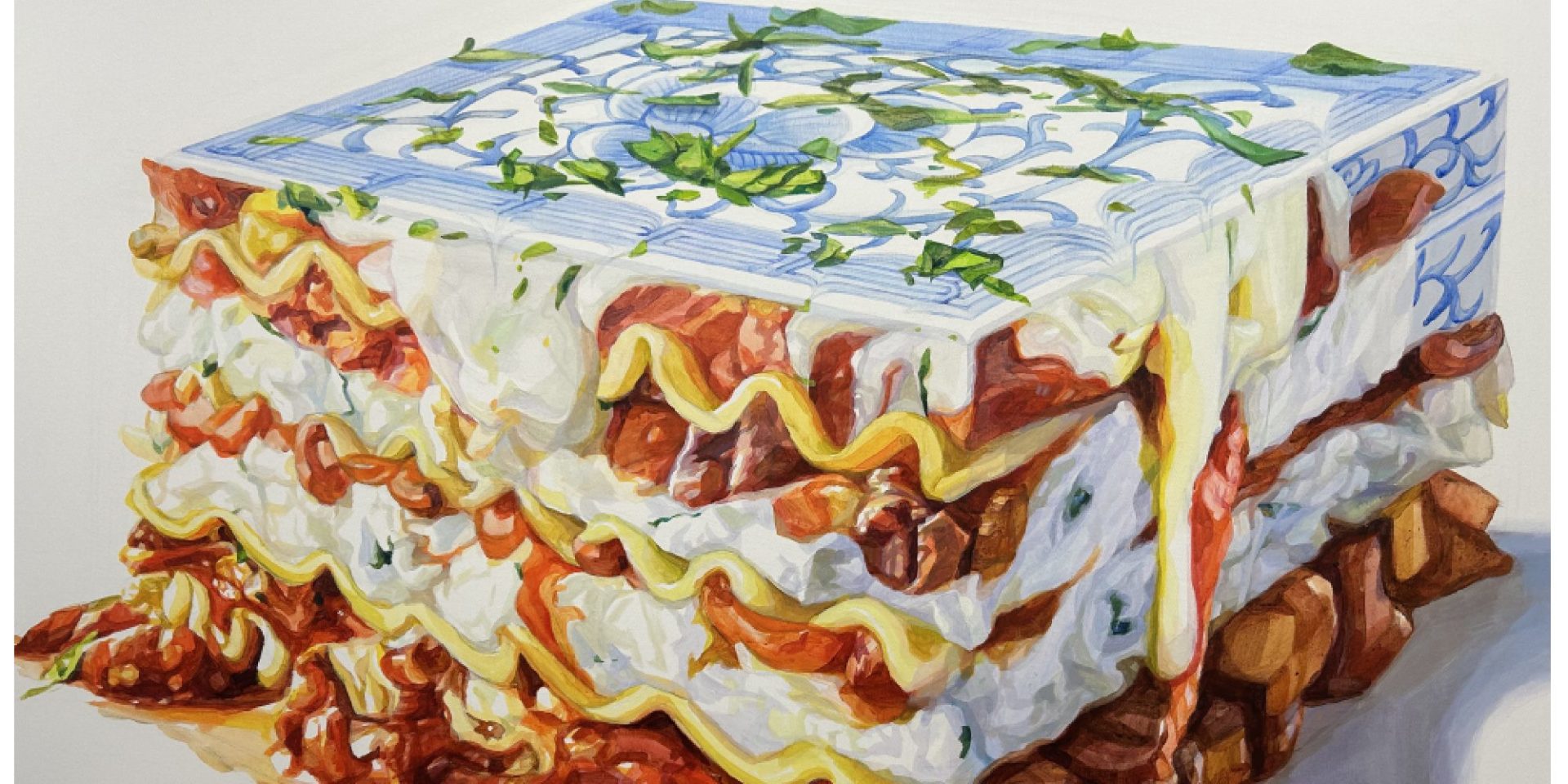Curation is an art. Selecting works for exhibits, or stories and poems for a collection, or putting together a playlist is an expression of who we are. The star of The Distance Between now showing at Parkland College’s Giertz Gallery is the skilled curation of Giertz Gallery Director Lisa Costello. The works themselves are diverse in medium and expression and are more than worth a trip out to Parkland. But time is running out so make your way to the gallery to experience this thought-provoking spring exhibition.
Costello wanted to “create a conversation with these works.” She noted that “if you look at the works of Eckert, Hull, and Martin together, you’ll have one conversation about sustainability and the nature of our throw away culture. But if you put Eckert in conversation with, say, Zhang’s work or with Yolanda del Amo’s photographs, you will walk away with a very different experience about more of an international interaction and those are the conversations I hope to engender.”
She couldn’t be more on point; the works in this exhibit are wildly different but there is a through-line of relationship and distance. Distance between people and our environment works with and against the literal distance between cultures. The exhibit questions what we throw away in our culture and how we choose what to value and where to place our attention.
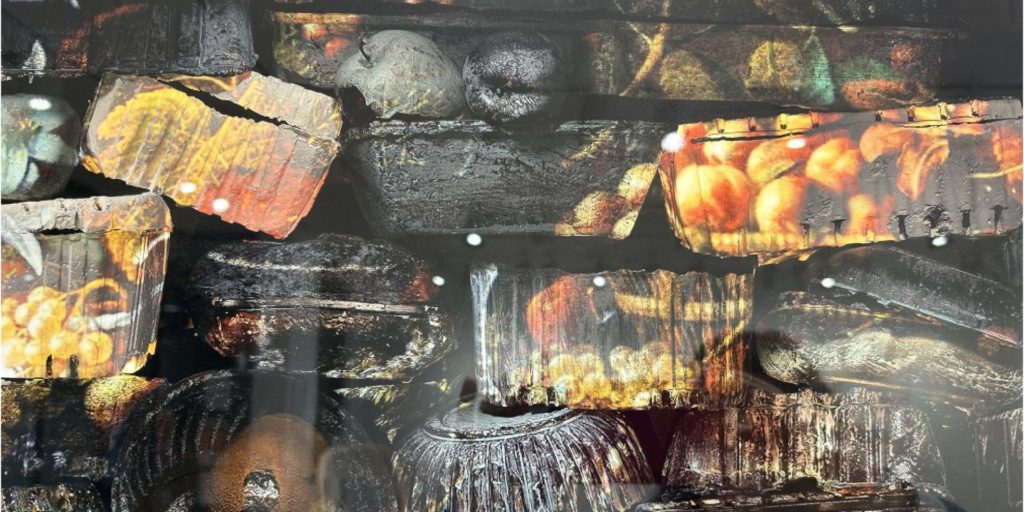
The work of Mitch Eckert embodies the theme in his series, Everlasting Remains. You’ll have to go to his talk next Wednesday, March 27th to find out more. These images are a series of altered artificial fruit sitting on and around the remains of Styrofoam food containers recast in paper pulp and then photographed using a Kallitype technique that throws gorgeous shadow and color onto the pile of artifacts. The effect is stunning. Working with still life, Eckert notes, “presents both constraints and opportunities.” The viewers in the gallery kept coming back and examining his series of labyrinthine photographs.
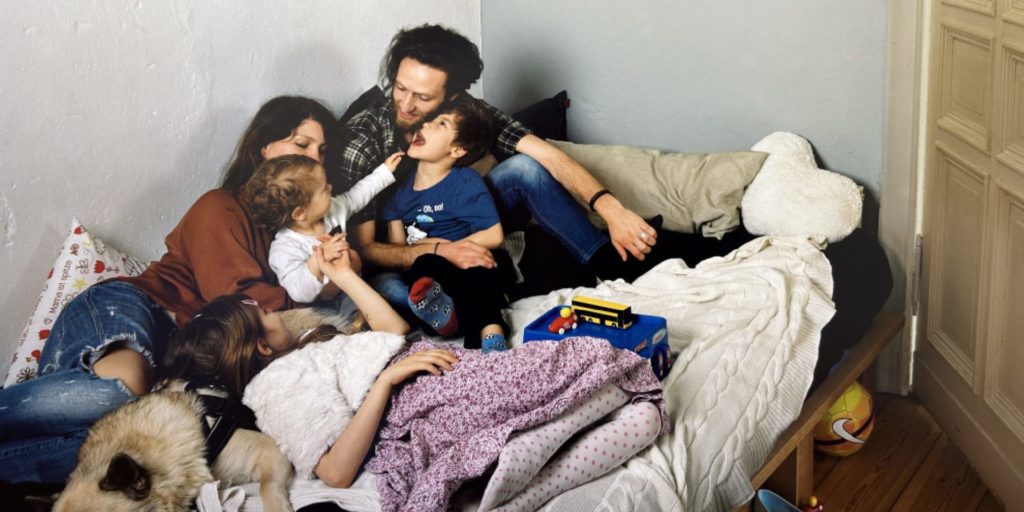
On the other side of the wall from Eckert you’ll find the startling and heart-warming images of (mostly) Syrian refugees embraced by welcoming families in Germany. Yolanda del Amo’s series, Refuge (2017-2019) is a series of inspiring photographic tableaux that re-envision the human response to welcoming the stranger. In del Amo’s large and compositionally mature photographs, there is no us vs. them. These are images of men and women living and loving together, undermining the typical media reaction to the very idea of the “refugee.” The figures here are transformative. As Costello noted about Refuge #7, “the triangle here reminds the viewer of a traditional Madonna and child structure. This is a poignant photo of a family that was birthed in ‘the refugee crisis.’” The joy and love in this image counteracts the constant stream of gloomy negativity we encounter in our traditional media.
I wouldn’t be worth much as a Smile Politely editor if I didn’t highlight the food images in the exhibit. The exhibit’s primary media image highlights the colorful work of Chinese-born Chunbo Zhang. Her Lasagna is featured at the top of this article. Zhang’s playful paintings dance between the Chinese culture she grew up in and the American culture she inhabits now. The paintings explore these dualities and tease the viewer with hints of surrealistic theatrics.
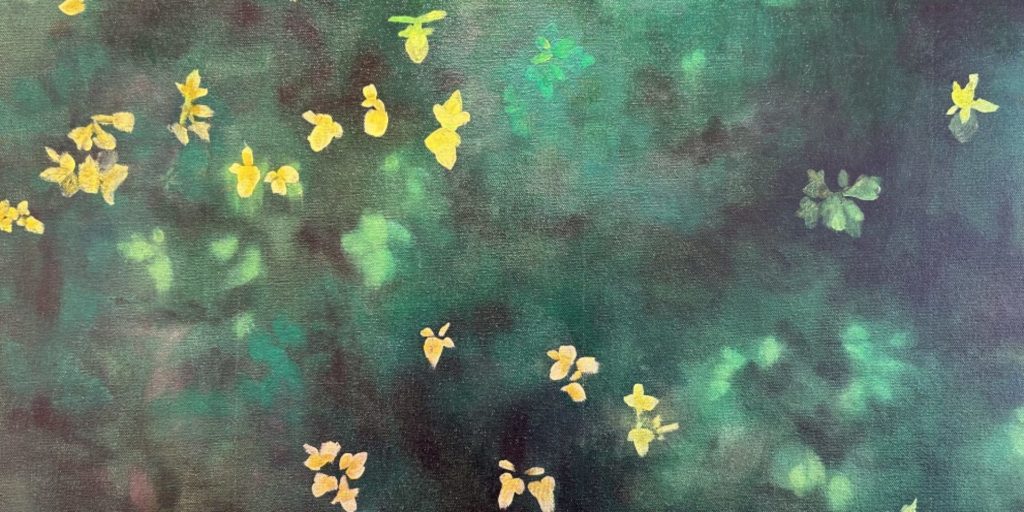
Costello placed the most, in some ways, traditional work on the back wall. The back wall often hosts the larger, splashier and most colorful works. Kelsey Blacklock’s oil on canvas paintings are not particularly large, but they are conspicuous with color. Blacklock walks her dog, according to her artist statement, “around the same path most days. A plot of untended land borders the sidewalk, unruly and nondescript.” What happens when we pay more attention to the unintended beauty in our midst? Blacklock’s paintings explode with yellows popping against emerald green and indigo backgrounds, giving them an almost three-dimensional effect.
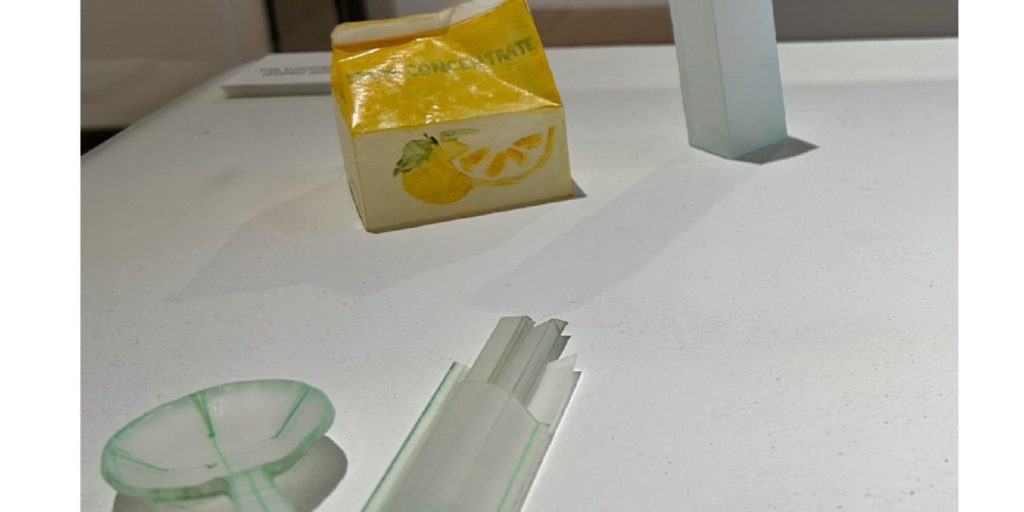
Simple in their materials, but so delicate in the well-lit case, Jennifer Seo’s colored pencil and vellum creations were challenging to photograph because my camera cannot quite pick up the complexity and transparency in these multidimensional creations. Her Spoon and Chopsticks and Honbab – How to Set the Table (colored pencil on paper and iridescent film) exude the temporality of our ordinariness. A milk carton. A juice box. Here today and gone tomorrow, but also, they’re not gone tomorrow. We live with traces of detritus everywhere. And some of it is quite beautiful, if we look.
The pieces that spark the most conversation, however, are the least photogenic. Jackson Martin’s sculptures entitled Making Amends, are all repaired and augmented disposable bits of discarded objects. Martin deliberately chose trashed items like an old metal folding chair, plastic laundry baskets, and Styrofoam containers. Using laborious craftsmanship and expensive materials including steam-bent wood, cast bronze, and fabricated steel, Martin transformed ordinary objects into centerpieces worthy of a richer conversation about the implications of extreme throw-away culture.
And we’re back to the theme: the distance between these objects and artists is dialogue made manifest. Costello has curated an urgent and necessary conversation at the Giertz Gallery.
On Wednesday, March 27th, the day after the exhibit closes, artist Mitch Eckert will give the final artist lecture in the series at 2 p.m. in the Staerkel Planetarium. The talk is free and open to the public.
The Distance Between
Giertz Gallery at Parkland College
2400 W Bradley Ave
Champaign
Feb 19-Mar 26
M-W 10 a.m. to 5 p.m.
Th 10 a.m. to 7 p.m.
Sa 12 p.m. to 2 p.m.
Free








